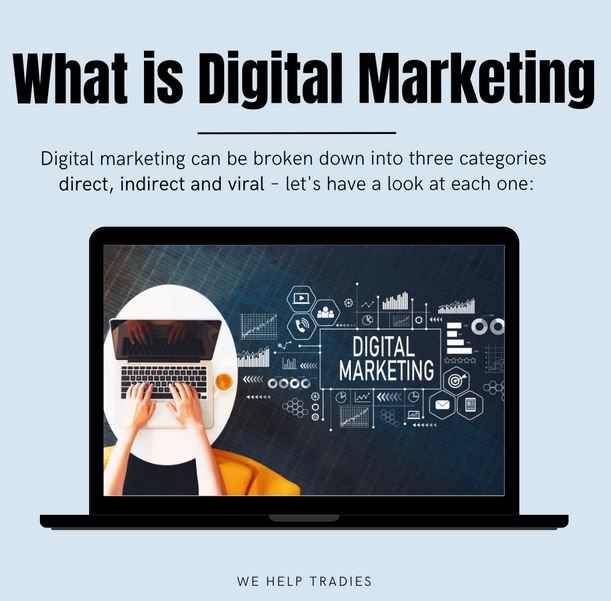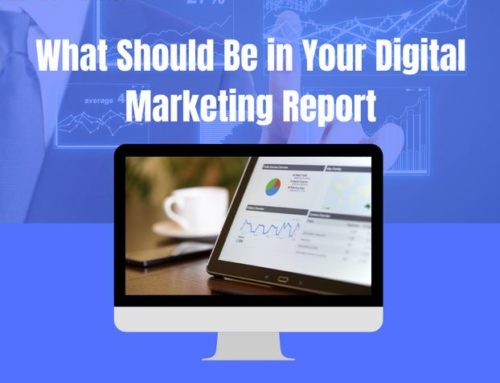In today’s world, digital marketing has become a vital part of running a successful business. It is an umbrella term for marketing products or services using digital technologies, mainly on the Internet, but also including mobile phones, display advertising, and any other digital medium.
Digital marketing goes beyond just posting ads online or sending out emails to building a digital strategy that helps you create a lasting impression with your customers and drives them to take action.
Digital marketing can be broken down into three categories – direct, indirect and viral – let’s have a look at each one:
#1. Direct Marketing
Direct marketing is probably what most of us think about when we hear the words ‘digital marketing’ as it involves sending promotional messages directly to your audience.
The message could be in the form of an email, text message, display ad or even a phone call. You can also include direct marketing in your social media strategy; download our free guide here, which outlines how you can use Facebook advertising for your business.
Direct marketing can be very effective in generating new business. Still, you need to have a database of email addresses or mobile numbers for your customers. This is why it may be beneficial for you to invest in automated email marketing software to help you manage this process.
When it comes to direct marketing, email marketing is one of the most popular and valuable ways for businesses to get their name out there. But did you know that 31% of marketers see email as the most effective direct marketing channel?
With so many emails being sent every day, it’s vital to stand out from the crowd with eye-catching subject lines and graphics. If you don’t, inbox clutter will mean that your email might never be seen by your customers – not ideal if you’re trying to build a long-lasting relationship with them.
#2. Indirect Marketing
On the other hand, indirect marketing is more subtle and focuses on providing information about your brand, product or service through various channels.
This information is usually helpful to your audience. Still, the intention and content of the message is not a direct ask for business.
For example, if you work in the travel industry and create a map with ten beautiful places in Cornwall on it and post it to social media, this would be indirect marketing as it’s providing information about your product or service – without directly asking your audience to buy it.
Indirect marketing is an excellent way of building trust and authority with your customers as you’re providing them with helpful information such as tips, guides and best practices. It also makes them more likely to engage with your business in the future. As digital-native companies grow, we will see an increase in indirect marketing.
#3. Viral Marketing
Viral (or word of mouth) marketing is the concept that customers satisfied with your product or service will recommend it to their friends and peers. It’s often free and can generate new business on a large scale. The more people share your content, the more potential customers you reach – so it’s essential to keep looking out for new ways to get your audience talking about you.
If you want to get viral, social media platforms such as Facebook, Twitter, Instagram, Youtube, Pinterest & Tik-Tok are some of the most powerful platforms that you can use.
The main benefit of social media is that it’s free to get started straight away, but be wary of the time investment as there are a lot of time-consuming tasks such as creating graphics, scheduling posts and engaging with people online.
So, do you want to start posting viral information about your business? Starting a Facebook Page for your business is the first step, and you can do this by visiting www.facebook.com/pages and clicking on the ‘Create a page for a celebrity, band or business’ link. Once you have your page up and running, it’s time to create that all-important Facebook advertising campaign.
There are several targeting options you can choose from, including by location or language, age range, gender, education, profession and relationship status – although the audience demographics for each option vary widely depending on what your product or service is.
Once you’ve chosen your potential audience, you need to decide whether you want to set a daily budget for your campaign or whether you want it to run indefinitely. You can also choose how long you want the ad to be active, with anywhere from one day upwards being available as an option.
Using the social media platforms mentioned, you can easily set up your accounts and start growing them. We’re also here if you need a reliable team to help you!
Final note, indirect and viral marketing tactics are great at creating brand awareness, but direct marketing will bring in that all-important revenue.
If you need help, give us a call on the numbers below or request your free consultation with We Help Tradies’s owner today.
Perth: 08 6558 0304
Sydney: 02 9068 1803



Leave A Comment